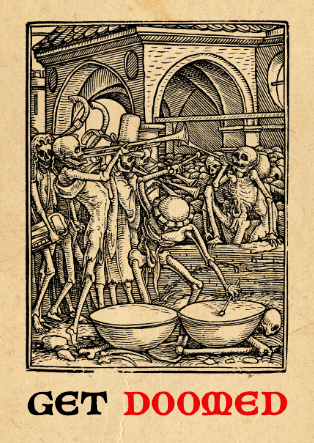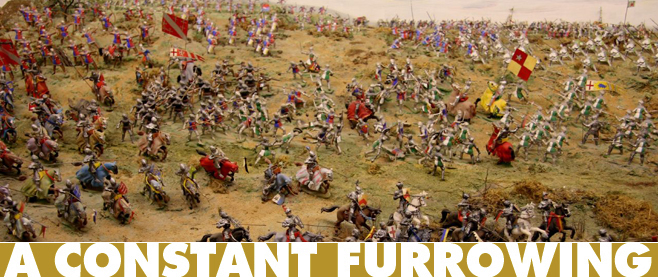Overrun
It’s 8 o’clock on a Saturday and I’m sitting on the beach with more than 600 other people while dazzling displays of fireworks explode in the starless black sky above. Up on the stage, lights flash and flames are shot into the air, the kind that often preempted big wrestling matches when I was younger. Everyone cheers, many clapping noisemakers together and pretending to drink from inflatable cans of Hot6, South Korea’s equivalent of Red Bull. Three enormous TV screens engulf the stage ahead.
But this isn’t a wrestling match or K-pop concert that we’re anticipating. It’s something far more surprising: a videogame tournament finale.
Season two of the Global StarCraft League is drawing to a close alongside Busan’s sandy coastline and, needless to say, it’s kind of a big deal. The competition is broadcast live on both television and the Internet, and English color commentary is also on site to translate the showdown for Western audiences.
[pullquote]StarCraft has been co-opted to the point that it has become one of the constants of Korean life, sitting comfortably alongside eating kimchi and visits to the bath house.[/pullquote]
It’s virtually impossible to overestimate StarCraft’s popularity in South Korea, especially considering the country’s fluid and finicky trend consciousness. When things catch on, they do so in fantastically large waves. The same songs that play on my third graders’ ringtones are 100 percent guaranteed to be featured on the phones of just as many Koreans over 60. Fashion styles envelop nearly everyone in the country’s urban centers, and popular soap operas like Secret Garden can capture more than a third of the population during their runs on television.
This phenomenon doesn’t stop with videogames, either. The enormously popular mobile game Crazy Racing Kart Rider became big enough that a quarter of all Koreans played it. Diablo III was met with such an embrace that one bar owner reported it as the cause of a marked decline in customers. When he closed down for the night, he went to a PC cafe and played Diablo III.
Waves like these come and go frequently, but StarCraft refuses to be washed away by any of them. It’s been co-opted by the country to the point that it has become one of the constants of Korean life, sitting comfortably alongside eating kimchi and visits to the bath house. When I first moved to the country two years ago, my students were just as shocked that I knew of StarCraft as they were when I recognized a K-pop star.
Few games, if any, can claim such an elevated place in a particular culture, but this sense of ownership has even spread overseas, to the point where oftentimes enthusiasts won’t care about tuning in to competitions that don’t involve Korean players. Casually surfing StarCraft forums brings up debates about whether or not Koreans are ever slipping in competitive play  with the rest of the world. Last year, IGN published an article reporting that Western players had fallen dangerously behind their Korean counterparts. Even foreign players hoping to break through competitively find themselves moving to practice in the country’s fabled StarCraft houses, where they submit themselves to 8-10-plus hours of training a day in order to prepare for tournaments.
with the rest of the world. Last year, IGN published an article reporting that Western players had fallen dangerously behind their Korean counterparts. Even foreign players hoping to break through competitively find themselves moving to practice in the country’s fabled StarCraft houses, where they submit themselves to 8-10-plus hours of training a day in order to prepare for tournaments.
If this gap persists, it was certainly on display during the GSL finals between teams FXO and SlayerS. FXO, the only group sporting a Western competitor in their lineup, somehow slugged its way to the finals after losing a string of players to other teams during the season. SlayerS, meanwhile, made its way through the tournament with relative ease. In a contest granting the first team to five wins the championship, FXO was the clear underdog.
I’ll be honest: the first match was a struggle to understand. My knowledge of StarCraft is limited, and the entire 20 minutes or so seemed like a mess. But even as I slowly picked up on what was happening during the first three contests, the winner-stays-on format made it increasingly clear that, Western teammate or not, the only person on team FXO that was going to play in these finals was a chubby-faced Korean called GuMiho. No matter what direction the matches took, his ability to regularly take opponents by surprise and adapt to changing situations loomed large. He simply wasn’t going to lose.
Though GuMiho went on to defeat every opponent and unexpectedly sweep FXO to the trophy, what sticks with me most from the tournament isn’t the game itself. Instead, it’s the slow but gradual descent into melancholy that SlayerS went through as their grip on the championship loosened with every defeat.
 I always feel a pang of the heart when the camera zooms in on a losing team during an important sporting event. Player after player is shown with their head down or, worse yet, staring off into space with a dejected emptiness, knowing that all their training and desire weren’t up to snuff. Watching the GSL finals left me with a similar feeling as I witnessed SlayerS’ energy deplete, eventually leaving a dozen or so people slouching lifelessly as FXO celebrated under a storm of confetti. The final round saw GuMiho launch out of his soundproof playing room as soon as he was victorious, while his opponent, visibly distraught, stewed in complete silence for a minute or two. No doubt the sight outside was enough on its own.
I always feel a pang of the heart when the camera zooms in on a losing team during an important sporting event. Player after player is shown with their head down or, worse yet, staring off into space with a dejected emptiness, knowing that all their training and desire weren’t up to snuff. Watching the GSL finals left me with a similar feeling as I witnessed SlayerS’ energy deplete, eventually leaving a dozen or so people slouching lifelessly as FXO celebrated under a storm of confetti. The final round saw GuMiho launch out of his soundproof playing room as soon as he was victorious, while his opponent, visibly distraught, stewed in complete silence for a minute or two. No doubt the sight outside was enough on its own.
Some dreams came true and some died that night. SlayerS isn’t even a team anymore, as they’ve recently disbanded. Still, they reminded me that despite the beachfront seats, the fireworks, and the sheer pageantry of the whole event, we were witnessing something more than spectacle.
———
Follow Jordan Mammo on Twitter @JordanMammo.





